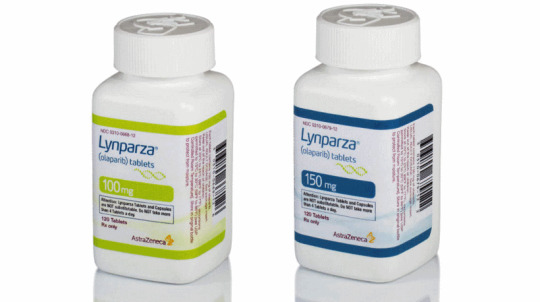#atm mutation pancreatic cancer
Text
Nf-κb Signaling In Tumor Pathways Focusing On Breast And Ovarian Cancer
ORR and a fifty seven per cent PSA response had been introduced. In sufferers without BRCA mutations, the tumour response price was solely eleven per cent and PSA response 6 per
Many of those small molecules are able to restoring the expression of p16INK4a in various cancers. Genistein, an isoflavone current in soybean, is a cancer chemopreventive agent that inhibits cell proliferation and induces apoptosis (Gullett et al., 2010 ). Li et al. reported that genistein represses early breast tumorigenesis by way of epigenetic regulation of CDKN2A by impacting histone modifications as properly as by recruiting the BMI1-c-MYC complicated to the regulatory area in the CDKN2A promoter ( Li et al., 2013b ). In prostate cancer, treatment with genistein increased acetylated histones 3 and four of the CDKN2A transcription start sites ( Majid et al., 2008 ). Thus, soybean merchandise containing genistein could be helpful in preventing breast and prostate cancer by way of transcriptional activation of CDKN2A by modulating its epigenetic silencing ( Li et al., 2013b and Majid et al., 2008 ). Rajendran et al. reported that Nrf2 wildtype mice confirmed a better incidence of colon tumors than Nrf2 heterozygous (Nrf2+/− ) mice when handled with 1,2-dimethylhydrazine.
Pancreatic screening in high-risk patients such as BRCA2 mutation carriers has been proposed to reduce PDAC-related mortality. In 2012, the International Cancer of the Pancreas Screening (CAPS) Consortium revealed pointers on the management of patients with elevated risk for familial PDAC (Canto et al. 2013). Just as a result of the genomic check doesn’t pick up a prostate cancer mutation does not mean you don’t have mutation/s that causes prostate cancer.
advanced tubo-ovarian cancer. The current commonplace of care in the first-line setting for most sufferers with newly recognized superior tubo-ovarian cancer is platinum-taxane chemotherapy and cytoreductive surgery with a goal to remove all of the seen cancer.
significant dose discount and delays. In HRD-positive metastatic pancreatic cancer, veliparib with FOLFOX (folinic acid, fluorouracil, and oxaliplatin) chemotherapy confirmed an ORR of fifty per cent, median PFS of seven.2 months, and median OS of eleven.1 months. In breast cancer, the section three BrighTNess trial randomly
We have been actually anticipating one thing as his dad died of prostate cancer and his mom died of breast cancer....but nothing hereditary found. He then took the Guardant blood take a look at and a variety of other variants/mutations have been found, which expanded his therapy options. Reactivation of silenced CDKN2A or the inhibition of epigenetic repression of the gene could be a rational strategy for the prevention or remedy of varied cancers. In comparability with previous trials such because the practice-changing SOLO-1, which was carried out in a
My cancer has PTEN misplaced which facilitates the copy of the cancer cells. FOXA1, Si-ZBP-89, Jmjd3, Mutant UHRF1 and c-JUN induce p16INK4a protein expression by re-activation of the CDKN2A promoter. Schematic structure of the INK4a /ARF locus and the function of p16INK4a in cells.
of olaparib with bevacizumab as first-line upkeep remedy for advanced tubo-ovarian cancer, no matter BRCA1/2 mutation status. The Monte Carlo simulation of 1,000 patients confirmed that the cost and effectiveness within the PFS illness section have been $3,124 ± $1,534 and zero.905 ± 0.449 QALY for placebo and $139,563 ± $33,046 and 1.544 ± 0.408 QALY for maintenance olaparib. The cost-effectiveness acceptability curve confirmed a nearly 54% likelihood of maintenance olaparib and 46% probability of placebo being a cheap strategy at the threshold of $200,000 per further QALY gained (Figure 4).
Furthermore, olaparib didn't significantly improve outcomes in cohort B that comprised different HRD mutations. The trials; PRIMA, PAOLA-1, and VELIA, offered at a Presidential Symposium on the Congress, provide evidence of improved survival for almost all affected person
brca1 pancreatic cancer risk
sub-types in high-grade superior tubo-ovarian cancer. The enhanced Warburg impact in addition to the elevated production of lactate in ATM-deficient CRPC cells prompted us to determine which enzyme within the glycolysis pathway is regulated by ATM deficiency. Actually, we examined the mRNA stage of LDHA in addition to different enzymes along the glycolysis pathway by RT-qPCR in the two cell strains. Only LDHA was dramatically upregulated in C4-2/ATM-KO cells (Fig. 4B), and this upregulation is further supported by the western blot displaying ~three-fold increase of LDHA protein expression in ATM-KO cells (Fig. 4C). To additional confirm the upregulation of LDHA by ATM loss, we handled C4-2 cells with ATM inhibitor KU and located that the expression of LDHA increased after 72-h therapy of cells with KU (Supplementary Fig. 2).
#environmental causes of pancreatic cancer#pancreatic cancer environmental causes#pancreatic cancer mutation gene#can pancreatic cancer be inherited#most common gene mutation in pancreatic cancer#does smoking cause pancreatic cancer#pancreatic cancer mutations#fammm syndrome#can smoking cause pancreatic cancer#is pancreatic cancer genetic#atm mutation pancreatic cancer#pancreatic cancer hereditary risk#what are possible risk factors that increase an individual's chance of developing cancer?#brca2 pancreatic cancer#brca1 and pancreatic cancer#pancreatic cancer inherited#brca gene and pancreatic cancer#four environmental factors that cause cancer#brca1 pancreatic cancer risk#brca gene pancreatic cancer#brca2 and pancreatic cancer#pancreatic cancer syndrome#pancreatic cancer genes#pancreatic cancer smoking#brca foundation#is pancreatic cancer rare#brca1 pancreatic cancer#pancreatic cancer age of onset#cdkn2a pancreatic cancer#causes of pancreatic cancer
1 note
·
View note
Text
AZ and MSD’s Lynparza gets fast prostate cancer FDA review

The FDA has granted AstraZeneca/MSD’s PARP-targeting drug Lynparza a fast review in prostate cancer, following hot on the heels of rival Clovis and its Rubraca and targeting a wider patient group.
Last week Clovis filed Rubraca (rucaparib) in metastatic castration-resistant prostate cancer (mCRPC), and AZ and MSD have followed this with their Lynparza (olaparib).
AZ is targeting the patients whose disease has progressed after androgen therapy with the homologous recombination repair gene mutation.
This includes the BRCA1/2 mutations indication that Clovis is chasing, plus a group of other similar mutations.
The filing is based on results of the PROfound trial in prostate cancer announced in August last year.
The FDA has set a decision date in the second quarter of this year, around the same time as it will give a verdict on Rubraca.
Both drugs inhibit an enzyme called poly (ADP-ribose) polymerase – or PARP – turning off a mechanism in certain cancer cells that prevents the build-up of damaging mutations and eventually causing the cells to self-destruct.
Results of the PROfound trial showed Lynparza significantly reduced the risk of disease progression or death by 66% compared with Johnson & Johnson’s Zytiga (abiraterone) or Pfizer/Astellas’ Xtandi (enzalutamide) in patients with BRCA1/2 or ATM-mutated mCRPC, the primary endpoint of the trial.
The trial also showed that Lynparza reduced the risk of disease progression or death by 51% compared with Zytiga or Xtandi in the overall trial population of patients with HRR-mutated mCRPC.
This included patients with mutations in the genes for BRCA1/2, ATM, CDK12 or 11 other HRRm genes, the trial’s secondary goal.
The safety and tolerability profile of Lynparza in the PROfound trial was in line with that observed in previous clinical trials.
With PROfound AZ and MSD are hoping to get its PARP drug approved in four different cancer types – ovarian, breast, pancreatic and prostate cancer.
After starting life as a niche drug in ovarian cancer following approval in 2014, Lynparza is transforming into a blockbuster thanks to its expanded uses.
AZ and MSD have already expanded the drug’s remit in ovarian cancer, added breast and pancreatic cancer to its label and introduced a new formulation.
In the first nine months of 2019 sales were $847 million, up 93% compared with the same period the year before.
If the FDA and other authorities approve it in the lucrative prostate cancer indication, there could be much more to come from Lynparza.
The post AZ and MSD’s Lynparza gets fast prostate cancer FDA review appeared first on .
from https://pharmaphorum.com/news/az-and-msds-lynparza-gets-fast-prostate-cancer-fda-review/
0 notes
Text
ATM Deficiency Generating Genomic Instability Sensitizes Pancreatic Ductal Adenocarcinoma Cells to Therapy-Induced DNA Damage
Pancreatic ductal adenocarcinomas (PDAC) harbor recurrent functional mutations of the master DNA damage response kinase ATM, which has been shown to accelerate tumorigenesis and epithelial–mesenchymal transition. To study how ATM deficiency affects genome integrity in this setting, we evaluated the molecular and functional effects of conditional Atm deletion in a mouse model of PDAC. ATM deficiency was associated with increased mitotic defects, recurrent genomic rearrangements, and deregulated DNA integrity checkpoints, reminiscent of human PDAC. We hypothesized that altered genome integrity might allow synthetic lethality-based options for targeted therapeutic intervention. Supporting this possibility, we found that the PARP inhibitor olaparib or ATR inhibitors reduced the viability of PDAC cells in vitro and in vivo associated with a genotype-selective increase in apoptosis. Overall, our results offered a preclinical mechanistic rationale for the use of PARP and ATR inhibitors to improve treatment of ATM-mutant PDAC. Cancer Res; 77(20); 5576–90. ©2017 AACR.
http://ift.tt/2gmlkSJ
0 notes
Text
As ESMO opens its doors, GSK and AZ prep ‘all-comer’ ovarian cancer data

GlaxoSmithKline and AstraZeneca will go head-to-head with new data on their PARP inhibitor drugs this weekend, as the European Society of Medical Oncology (ESMO) congress in Barcelona gets underway.
AZ will present new data on Merck & Co/MSD-partnered PARP drug Lynparza (olaparib) in ovarian, prostate and pancreatic cancer, while GSK will set out the case for Zejula (niraparib) – acquired along with Tesaro earlier this year – in ovarian cancer.
PARP drugs work by interfering with cancer cells’ DNA repair system, eventually causing them to self-destruct.
First-to-market Lynparza is leading the PARP inhibitor market at the moment with sales of $520m in the first half of 2019 coming from its approved indications in second-line and first-line maintenance therapy for ovarian cancer, and relapsed HER2-negative, BRCA-positive breast cancer.
GSK has high hopes for Zejula – currently only approved for second-line ovarian cancer treatment – and doctors and investors will be looking for strong data in the first-line maintenance setting if it is to mount a challenge to Lynparza, and justify the $5.1 billion the company paid for Tesaro.
At ESMO, AZ will report data from the PAOLA-1 trial reinforcing earlier findings that adding Lynparza to standard treatment with Roche’s Avastin (bevacizumab) provides an improvement in progression-free survival (PFS) as a first-line maintenance therapy in ‘all-comer’ patients, i.e. those with and without BRCA mutations.
Extending use of the PARP inhibitors to new cancers that don’t necessarily involve BRCA and related mutations could dramatically extend the reach of the class, and drive multibillion-dollar sales, according to analysts.
Also on the agenda is the first detailed showing of results from the PROfound trial in metastatic castration-resistant prostate cancer (mCRPC), showing that Lynparza improved radiographic PFS in patients whose tumours had BRCA1/2 or ATM mutations and who had relapsed despite first-line use of new-generation hormonal therapies.
Later at ESMO AZ will present new results from the POLO trial of Lynparza in germline BRCA-positive metastatic pancreatic cancer, a fourth potential cancer indication, showing improved PFS and quality-of-life when used as maintenance therapy for patients whose disease had not progressed during first-line platinum-based chemotherapy.
The centrepiece of GSK’s ESMO presentations for Zejula will be the PRIMA study of the drug as first-line maintenance therapy in newly-diagnosed advanced ovarian cancer, which the company has previously said clearly show that the drug can benefit women independent of their BRCA biomarker status.
The data could potentially lead to the drug being approved in a broader population of patients than Lynparza, which for now is used only for the 15% of ovarian cancer patients who are BRCA-positive.
Lynparza and Zejula are facing increasing competition in the market from new entrants, namely Clovis Oncology’s Rubraca (rucaparib) and Pfizer’s Talzenna (talazoparib).
The post As ESMO opens its doors, GSK and AZ prep ‘all-comer’ ovarian cancer data appeared first on .
from https://pharmaphorum.com/news/as-esmo-opens-its-doors-gsk-and-az-prep-all-comer-ovarian-cancer-data/
0 notes
Text
AZ/MSD’s Lynparza sees positive results in prostate cancer

AstraZeneca and MSD have announced positive phase III results for their PARP inhibitor Lynparza (olaparib) in metastatic castration-resistant prostate cancer (mCRPC).
The PROfound trial met its primary endpoint, demonstrating a statistically-significant and clinically-meaningful improvement in radiographic progression-free survival with the drugs enzalutamide or Zytiga (abiraterone acetate) in patients with BRCA1/2 or ATM gene mutations.
“For men with mCRPC the disease remains deadly, especially in those who have failed on a new hormonal anticancer treatment,” said José Baselga, AZ’s executive vice president, oncology R&D. “This trial is the only positive Phase III trial of any PARP inhibitor in mCRPC, where the need for new, effective therapies is high. The PROfound trial also demonstrates the potential value of genomic testing in this at-risk patient population.”
AstraZeneca and MSD say that they plan to present the full data at a forthcoming medical meeting.
Meanwhile another trial, PROpel, is testing the drug as a first line therapy in combination with Zytiga for mCRPC.
The drug is also approved for use in ovarian and breast cancer, and has also recently shown promise in pancreatic cancer.
Lynparza is a poly (ADP-ribose) polymerase (PARP) inhibitor that works by preventing this protein in cancer cells from repairing damaged DNA in patients with BRCA mutations.
This causes cancer cells to die but does not affect healthy cells, which are not reliant on the PARP protein to survive.
The drug has been the trailblazer for this class of medicines, which evidence suggests can be used in a wide range of cancers as long as certain mutations are present.
Lynparza also has the benefit of being an oral medicine, making it convenient for patients to take and meaning healthcare professionals don’t have to worry about organising or administering regular injections at clinics.
In June expert Mary-Ellen Taplin, of the Dana Farber Cancer Institute, praised the design of the study in an analysis and was supportive of olaparib’s potential in prostate cancer.
But she did raise an issue about how this drug could be used in a real-life setting: selecting patients with mutations that are most likely to respond could be tricky.
“The experience provided warns that identifying appropriate patients within routine clinical practice will be challenging and will require repeated testing,” she said.
This could prove a difficult technical challenge – but the data has so far been well received by clinicians.
The post AZ/MSD’s Lynparza sees positive results in prostate cancer appeared first on Pharmaphorum.
from Pharmaphorum https://pharmaphorum.com/news/az-msds-lynparza-sees-positive-results-in-prostate-cancer/
0 notes